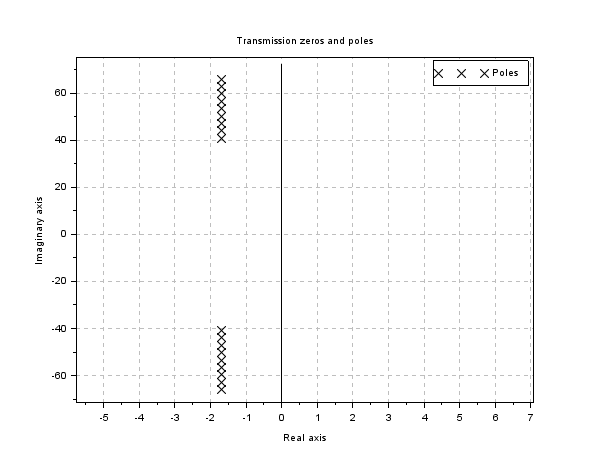I have a dsp algorithm which is based on the below given state space model in the continuous-time domain
$$ \begin{bmatrix} \frac{\mathrm{d}\hat{\psi}_{r_{\alpha}}}{\mathrm{d}t} \\ \frac{\mathrm{d}\hat{\psi}_{r_{\beta}}}{\mathrm{d}t} \end{bmatrix} = \begin{bmatrix} -\frac{R_R}{L_L + L_M} & -p_p\cdot\omega_m \\ p_p\cdot\omega_m & -\frac{R_R}{L_L + L_M} \end{bmatrix} \cdot \begin{bmatrix} \hat{\psi}_{r_{\alpha}} \\ \hat{\psi}_{r_{\beta}} \end{bmatrix} + \begin{bmatrix} \frac{L_M\cdot R_R}{L_L + L_M} & 0 \\ 0 & \frac{L_M\cdot R_R}{L_L + L_M} \end{bmatrix} \cdot \begin{bmatrix} i_{s_{\alpha}} \\ i_{s_{\beta}} \end{bmatrix} $$
It is basically a model of a dynamic system, where the variables $i_{s_{\alpha}}$, $i_{s_{\beta}}$ and $\omega_m$ are the inputs of the dynamic system and the $\hat{\psi}_{r_{\alpha}}$, $\hat{\psi}_{r_{\beta}}$ are its outputs (the unmeasurable state variables of the system). This model is intended to be used as a state observer. I know that there are much more robust approaches for estimation of the unmeasurable state variables of a dynamic system but I would like to do a comparison between several methods. As far as the parameters of the state space model: $R_S = 7.400\cdot 10^{-3}$, $R_R = 7.548\cdot 10^{-3}$, $L_M = 4.265\cdot 10^{-3}$, $L_L = 0.231\cdot 10^{-3}$, $p_p = 3.0$.
For the software implementation purposes it is necessary to discretize the continuous-time domain model (sampling period is $T = 100\cdot 10^{-6}\,\mathrm{s}$). I have been thinking about the simple Euler method (i.e. the state transition matrix $\Phi$ approximated only via the first two terms of the series expansion) usage. But I have noticed that the above given system is probably much more complex for computation than it seems at first glance. I have calculated the eigen values of the system matrix (i.e. poles of the system) in respect to the input $\omega_m$ and I have found that the poles are pretty near to the stability boundary in the s-plane.
If I transformed the system into the discrete form via the ZOH method I found that the system poles (in respect to the input $\omega_m$) are even nearly on the stability boundary.
My question is how I can implement this system in a software (in the single precision floating point) to be sure that the solution (the system state variables) will be stable?
Edit:
The idea behind my question is that I have noticed that the poles of the discretized system (zero-order hold discretization) are very close to the unit circle boundary (the "reserve" is only a couple of ten thousandths). Source of my doubt is that in case I implement the discrete system in a control software it is from my point of view very good chance that due to the limited precision the poles can move outside the unit circle and the system can become very easily unstable. On the other side the poles of the original continuous time domain system has its poles a little more far from the stability boundary. I have basically though about a discretization method which will preserve this reserve. The idea which I have is to use more terms of the approximation of the state transition matrix $\Phi$ which is used in the discretization process.


